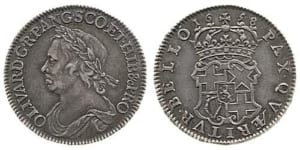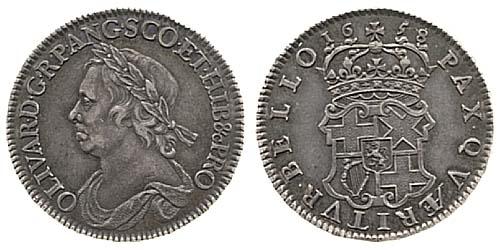The half crown was first issued in 1549 with a value of two shillings and sixpence or one-eighth of a pound.
Since being demonetised, the half crown has become a highly collectable coin, with values ranging from less than one pound to thousands depending on the year the coin was minted.
In this article, we’ll explore the history of the half crown and give some examples of how much they can be worth.
History of the Half Crown
As previously mentioned, the half crown was first issued in 1549 during the reign of Edward VI. Edward VI was quickly succeeded by Queen Mary, but no half crowns were produced during her reign between 1553 and 1558.
Afterwards, Elizabeth I took to the throne between 1558 and 1603, in which during this reign and every reign thereafter until 1970 – excluding only Edward VIII – half crowns were issued. It was in 1970 that the half crown was finally demonetized, the year before decimalisation.
Design of the Half Crown
The half crown has taken on many different designs and compositions throughout its extensive history. This variance is what makes the half crown so collectable, there are many different versions which can appeal to many different people.
On top of that, before 1946 when the half crowns were changed to cupro-nickel composition they were either minted from silver or gold; adding to the value. Interestingly, the half crown did not display its value until 1893.
Typically, the half crown contains a design of a crowned shield on the reverse of the coin, with a profile of the reigning monarch on the obverse. There have been many different variations of the design throughout the years, but the principle remains the same.

Changing Composition
The earlier versions of the half crown, such as those struck under King Henry VIII and Queen Elizabeth I were made from gold. After the reign of King James I the composition was changed to silver only.
Gold versions are, understandably, quite valuable.
The amount of silver varied from 92.5% between 1816 and 1919, and 50% from 1920 to 1946. The impact of the First and Second World Wars meant that it was no longer economically viable to continue to use precious metals for the production of coins, as reserves were much more important during these times.
This also occurred with the shilling.
Half Crown Value
The half crown was minted for approximately 263 years, with many being hammered or milled before that.
There a millions of half crowns out there, with numerous different designs, compositions and historical contexts behind them. Due to this, it becomes extremely difficult to give an answer as to how much a half crown is worth in generic terms.
Let’s take a look at some examples so you can get an idea of why it is so difficult to summarise the value of a half crown today in one blog post.
George III Half Crown
George III had an impressive reign as King between 1760 and 1820, meaning there are a large variety of half crowns from this era available to buy.
You can expect to pay anywhere from a few quid to well into the hundreds of pounds for an example from this era, depending on condition and the year of mintage.
Edward VII Half Crown
Edward VII was King of England between 1901 and 1910, having a relatively short reign of only 9 years. The range of values achieved on eBay for half crowns from this era ranges from around £5 to well over £1000.
This further adds to the argument that the variance in values of half crowns can be very large and that only a specialist can give you a realistic value.
George VI Wartime Half Crown
George VI was King of England between 1936 and 1952, the time when the half crown’s composition was changed from 50% silver to cupro-nickel.
A World War Two era George VI half crown can expect to sell for around £3.50 according to eBay, in circulated condition and not including proof versions of the coin.
There is a lot of variation in sold prices achieved, which highlights why when buying or selling a coin such as a half crown it is definitely worthwhile to do your research first.
Auction Prices
If you want to learn more about the values of rare half crowns, then we suggest taking a look through auction listings here.
There really is nothing quite like browsing through completed auction listings to get an idea of how much certain coins are selling for, and given how complicated the history of the half crown is, we highly recommend doing so.
